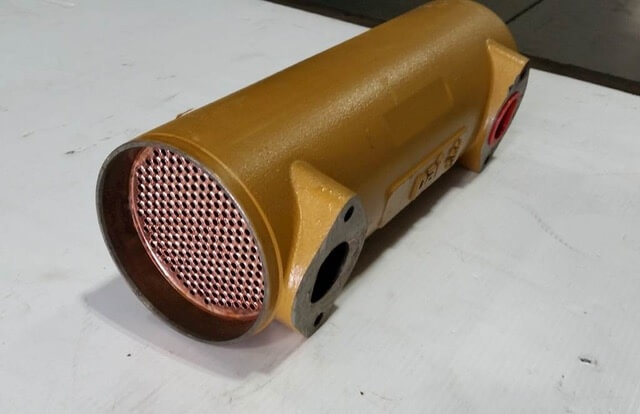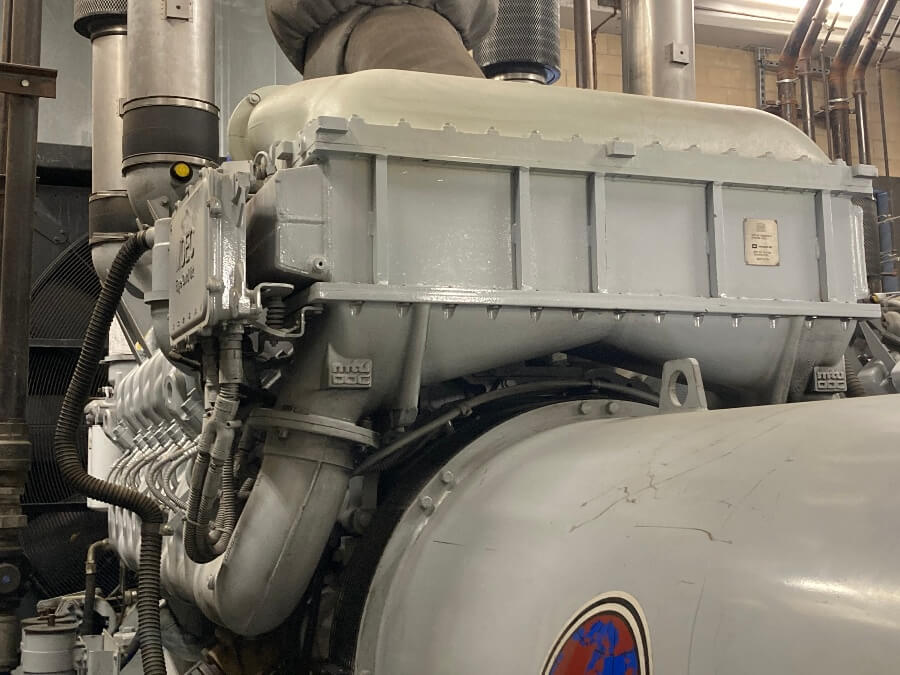There are many components that affect the performance of your diesel engine cooling system, from a cooling engine thermostat to the liquid coolant that helps carry heat away from your engine. One of these you may not think about is the oil cooler core. An oil cooler core is essentially a small radiator that lowers the temperature of the oil passing through your system. A problem with the oil cooler core can lead to oil leaks, overheating, smoking and eventually engine failure. It’s important to have a basic understanding of this cooling system component and what signs of potential problems to look for.
Troubleshooting an Oil Cooler Core
One of the most common issues tied to the oil cooler core is an oil or coolant leak. These can usually be detected with a pressure check. After removing the core from the cooling system, it is submerged in a tank of water and pressurized to reveal signs of a leak. If there is a leak, the difficulty of repairing it depends on the size and location of the core. In some cases, it is necessary to replace the entire core.
Like in any other type of radiator, the tubes running through an oil cooler core can sometimes become blocked. This limits the flow of water through the tubes and prevents the cooler from effectively lowering the temperature of the oil. Plugged water tubes can often be fixed with a thorough cleaning. However, blocked oil passages usually require a core replacement.
The oil filter should be carefully inspected any time an oil cooler core is installed or replaced. The quality of the filter can help indicate the quality of the oil cooler core. For example, if there are small chips present in the oil filter, it probably means there are also chips in the oil cooler core. This is especially true if your system is built so oil flows through the cooler first and then the filter, as most systems are. In that case, the oil cooler core cannot be completely cleaned and will likely have to be replaced. As a general rule of thumb, if your oil filter is somehow contaminated, your oil cooler core is probably contaminated too.

What to Know About Aftercooler Cores
An aftercooler is a heat exchanger that lowers the temperature of air after it has travelled through a diesel engine’s turbocharger. The purpose of having a turbocharger is to increase the power and energy efficiency of an engine. In some applications, such as in heavy marine equipment, this extra power comes in handy. Aftercooler cores are different from oil cooler cores, but some of the same principles of problem detection and repair apply.

Having proper air supply is crucial for an efficient aftercooler core. If your system has one, make sure the aftercooler core is getting enough air circulation and that fumes are not being directed near the air intake, since that could decrease its efficiency. In marine engines, it’s important to measure and regulate the temperature of both the air and the sea water flowing around your aftercooler core. The air temperature will change at a certain rate relative to water temperature, and if these temperatures get out of balance, it could be a sign that the aftercooler core is plugged.
Unlike other types of cooler cores, the tube bundles in an aftercooler cannot be cleaned from the inside using a rod. Instead, they must be back flushed using a reverse flow of water. Unless the core cannot be removed from the system, it is usually best to have these cleaned in a shop by expert technicians.
To get in touch with an expert diesel engine cooling system team trained to service oil cooler cores and aftercooler cores, contact Industrial Radiator Service today.
